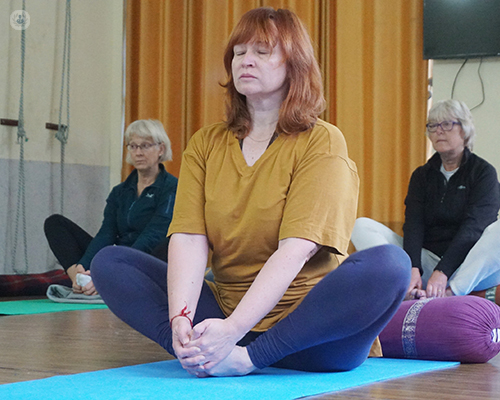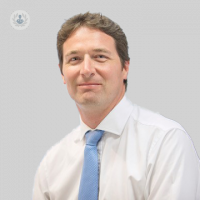Recovery and potential complications of DIEP flap breast reconstruction surgery
Written by:Women who have had a mastectomy will often require some form of breast reconstruction surgery. Many are now opting for a procedure called Deep Inferior Epigastric Perforator (DIEP) flap surgery over breast implants due to their longer-term benefits. In the final of three articles, Mr Kelvin Ramsey - an expert plastic surgeon who has performed more than 500 DIEP flap operations – explains what recovery is like after undergoing DIEP flap surgery, and potential complications to be aware of.

What is recovery like after DIEP flap reconstruction surgery?
- Day 1: The first night is spent in a high-dependency area so that the flap can be regularly checked to ensure the blood supply to the flap is sufficient. You will be kept warm and comfortable, although your sleep may be occasionally disrupted.
- Day 2: A physiotherapist will help you sit in a chair and perhaps take a few steps around the room. You will start eating and drinking normally.
- Day 3 - 4: The drains and catheter are removed, showering takes place and mobilisation is increased. You should be able to return home after four days.
- Days 7 – 10: You will attend a dressing appointment where a nurse will remove the dressings and check the wound. Daily showers are advised.
- After 2 – 3 weeks: You can return to non-physical employment and start driving again, depending on how recovery is going.
- After 4 weeks: You can resume gentle exercise.
- After 6 – 8 weeks: You are able to return to manual labour, if applicable and resume more strenuous exercise.
Will I have scars?
During the procedure, an incision is made on your breast as well as on the abdomen. The abdominal incision is long and curved across the tummy above the bikini line. You can also expect an incision around the belly button. All of these incisions do result in scars, however, these fade over time.
Some scars, known as hypertrophic scars, can be red, raised and itchy following surgery for the first few months. These are treated but can result in a more visible scar. Keloid scars, which are larger and more difficult to treat are very rare.
What are the potential complications from DIEP flap surgery?
Like any major surgery DIEP flap reconstruction does carry its chances of complications, however, the complication rate is less than 10%, most of which are minor issues.
Here are the most common complications that could occur:
- Haematoma – This is a collection of blood inside the body, which post-surgical drains aim to prevent. If one does occur, then a short operation is carried out to drain the build-up of blood. The risk of this is approximately 2%.
- Flap loss or failure – This is very rare, but is quite serious. If the blood supply to the new tissue is not sufficient, then the new tissue might fail. During the first few days, if there is any concern regarding this then another operation may be required. If it is not possible to salvage this, the operation fails and another type of reconstruction will be required. This is extremely rare (less than 0.5%).
- Infection – Chances of infection are low as antibiotics are given during surgery to reduce these chances. Any infections that appear after surgery will need a second course of antibiotics.
- Seroma – (a build-up of fluid under the wound) Very rarely will a seroma have long-term consequences, and the fluid can easily be drained in an outpatient appointment.
- Lack of sensation in the new breast – The new breast will be numb initially, but over the first 18 months after surgery some of the sensation will return.
- Asymmetry – Although most women have asymmetrical breasts, during surgery every effort is made to create a new breast that matches the other natural one. Sometimes a patient will require a breast reduction or mastopexy (hitching up) to achieve better symmetry.
- Abdominal bulge or hernia – In very rare cases, a weakness in the abdominal wall post-surgery can produce a bulge or hernia. This is very rare but can require additional surgery. However, this is very unlikely as during DIEP flap reconstruction, the abdominal muscles are left intact.
- Psychological problems – Like any cancer diagnosis and its treatment, the experience can be traumatic, however, the care team will provide support, as well as lots of external organisations that offer support and advice.
The DIEP flap surgery is favoured by many women because of its pleasing visual results, and long-term benefits. If you are considering breast reconstruction, Mr Ramsey can provide more insight and give his expert opinion on which treatment is best for you.
If you are considering DIEP flap breast reconstruction surgery and would like to learn more, talk to a specialist to go over your options and what to expect.


